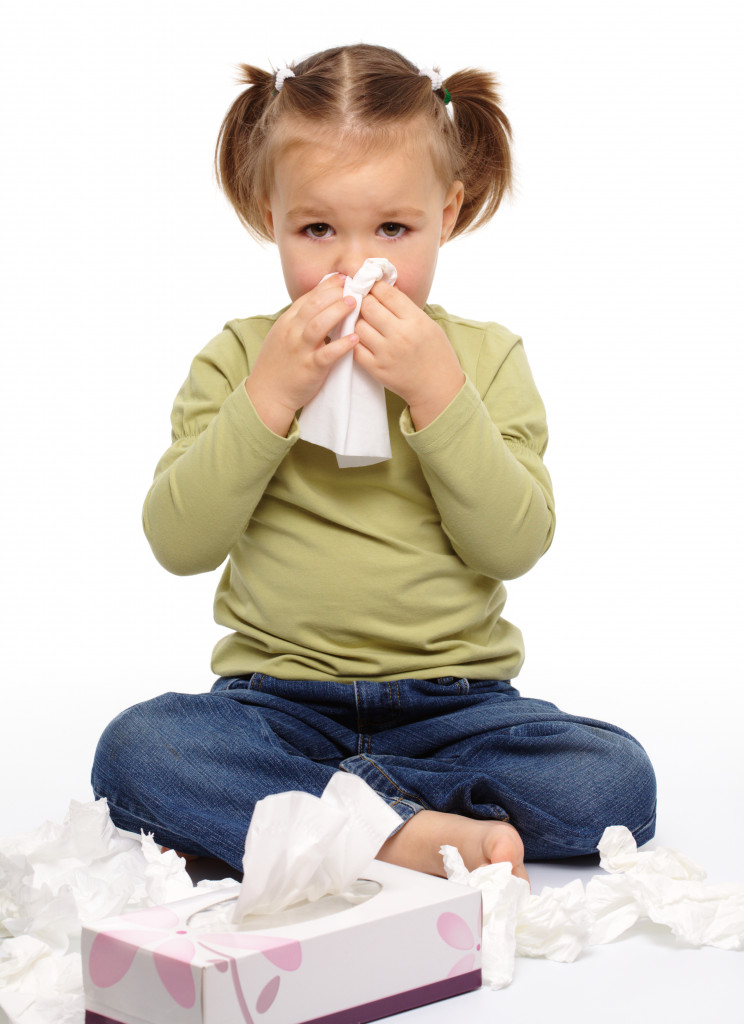At times of the year, sniffles, sneezes, and itchy eyes seem everywhere. In most regions of the US, spring allergies occur from February until early summer. But allergies can happen any time of year. In simple terms, allergies are caused by the immune system overreacting to certain substances that should typically be harmless to most people. This substance is known as an allergen.
If you suspect your child may have allergies, you’re probably wondering what the best course of action is. Here’s what you need to know and do if you think your child has allergies.
Keep a symptom journal.
If you suspect your child has allergies, keeping track of their symptoms can be helpful. This will help you and your doctor identify patterns and triggers. Make a note of when and where the symptoms occur, what kinds of things seem to make them better or worse, and how long they last. This information can be beneficial in determining whether allergies are the culprit.
For instance, if your child only has symptoms when they’re outside on a pollen-filled day, that’s a pretty good indicator that they’re allergic to pollen. If their symptoms occur year-round and seem triggered by certain foods, they are more likely to have food allergies.
Set up your journal to include columns for the date, time, location, type of symptom, any possible triggers, and how long the symptom lasted. If you can also include a photo or description of the trigger (e.g., a picture of the pollen on your child’s shirt after they’ve been outside), that can be helpful, too.
Regardless of what type of journal you use, be sure to bring it with you when you visit the doctor, so they can get a better idea of what’s going on.
Schedule an appointment with the pediatrician.
Once you have a good idea of your child’s symptoms, it’s time to talk to their pediatrician. There are many child allergy doctors who will be able to ask specific questions and conduct a physical exam to rule out other possible causes of the symptoms. If allergies are suspected, they may recommend further testing.
There are two types of allergy testing: skin prick and blood testing. Skin prick testing is generally conducted first, as it is less invasive and expensive than blood testing. A small amount of allergen is placed on the skin; then, the area will be punctured with a needle to allow the allergen to enter the skin. If there is no reaction after 15 minutes, it’s unlikely that your child is allergic to that particular substance. If a reaction does occur, the doctor may order blood testing to confirm the allergy.
Blood testing works by looking for antibodies produced when the body comes into contact with an allergen. This type of testing is usually reserved for cases where skin prick testing is not possible or not definitive.

Develop an allergy action plan.
If your child does test positive for allergies, don’t panic! The doctor will work with you to develop an allergy action plan that outlines what steps need to be taken in the event of an allergic reaction. This plan will likely include carrying EpiPens (epinephrine injectors) at all times in case of a severe reaction and avoiding known triggers and substances whenever possible.
It’s also vital that your child understand their allergies and what they need to do in order to stay safe. Teach them how to identify their symptoms and what steps they need to take if they think they’re having a reaction. It’s also crucial that they know how to use their EpiPen correctly in case of a severe reaction (you can find instructions here). The more knowledgeable they are about their allergies, the better equipped they’ll be to manage them effectively!
With a bit of planning and preparation, you can help your child live a happy, healthy life despite their allergies. Just remember to stay calm and talk to your doctor if you have any concerns—they’re there to help!
Allergies can be a pain for both kids and parents alike, but fortunately, some things can be done to manage them effectively! If you suspect your child has allergies, start by keeping track of their symptoms in a journal. Then schedule an appointment with their pediatrician, so they can rule out other possible causes and recommend further testing if necessary. Once allergies have been confirmed, work with the doctor to develop an allergy action plan that includes carrying EpiPens at all times and avoiding known triggers whenever possible. Finally, ensure your child understands their allergies and what steps they need to take to stay safe.

